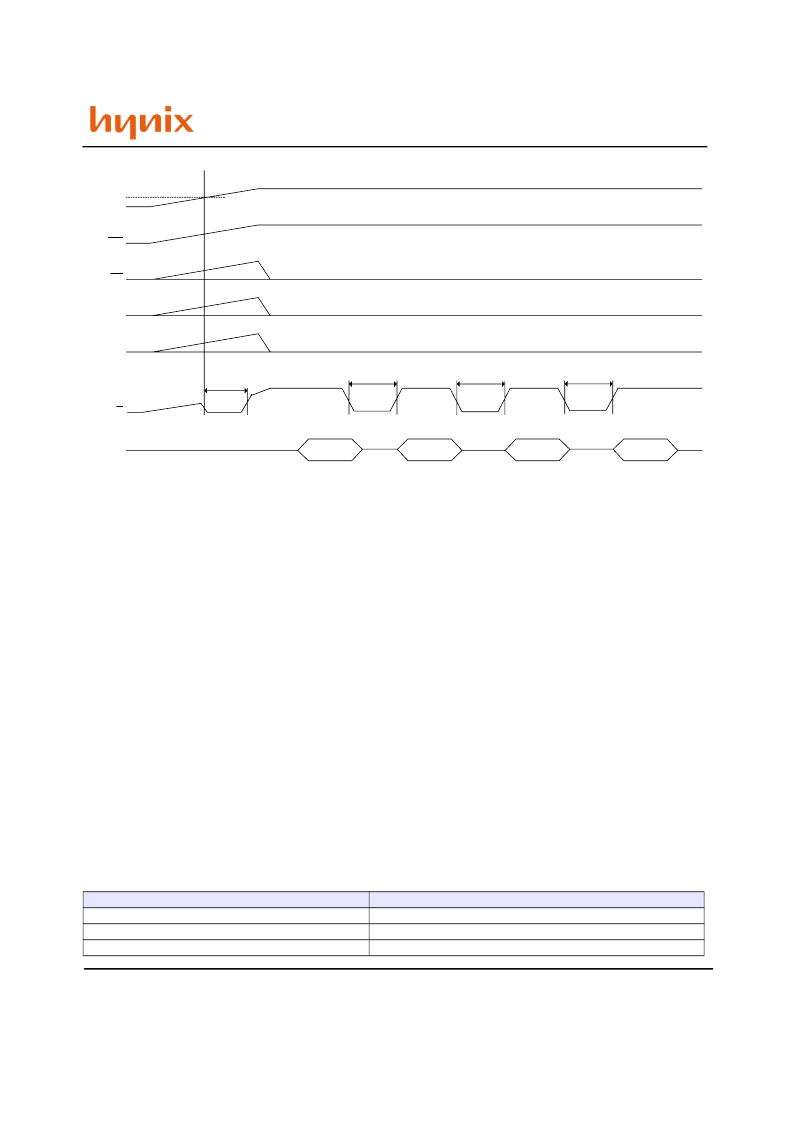- 您現(xiàn)在的位置:買賣IC網(wǎng) > PDF目錄385414 > HY27UAxxx (Hynix Semiconductor Inc.) 1Gbit (128Mx8bit / 64Mx16bit) NAND Flash Memory PDF資料下載
參數(shù)資料
| 型號: | HY27UAxxx |
| 廠商: | Hynix Semiconductor Inc. |
| 英文描述: | 1Gbit (128Mx8bit / 64Mx16bit) NAND Flash Memory |
| 中文描述: | 1Gbit的(128Mx8bit / 64Mx16bit)NAND閃存 |
| 文件頁數(shù): | 23/43頁 |
| 文件大小: | 729K |
| 代理商: | HY27UAXXX |
第1頁第2頁第3頁第4頁第5頁第6頁第7頁第8頁第9頁第10頁第11頁第12頁第13頁第14頁第15頁第16頁第17頁第18頁第19頁第20頁第21頁第22頁當(dāng)前第23頁第24頁第25頁第26頁第27頁第28頁第29頁第30頁第31頁第32頁第33頁第34頁第35頁第36頁第37頁第38頁第39頁第40頁第41頁第42頁第43頁

Rev 0.5 / Oct. 2004
23
HY27UA(08/16)1G1M Series
HY27SA(08/16)1G1M Series
1Gbit (128Mx8bit / 64Mx16bit) NAND Flash
Bad Block Management
Devices with Bad Blocks have the same quality level and the same AC and DC characteristics as devices where all the
blocks are valid. A Bad Block does not affect the performance of valid blocks because it is isolated from the bit line and
common source line by a select transistor.
The devices are supplied with all the locations inside valid blocks erased (FFh). The Bad Block Information is written
prior to shipping. Any block where the 6th Byte/ 1st Word in the spare area of the 1st or 2nd page (if the 1st page is
Bad) does not contain FFh is a Bad Block.
The Bad Block Information must be read before any erase is attempted as the Bad Block Information may be erased.
For the system to be able to recognize the Bad Blocks based on the original information it is recommended to create a
Bad Block table following the flowchart shown in Figure 20.
Block Replacement
Over the lifetime of the device additional Bad Blocks may develop. In this case the block has to be replaced by copying
the data to a valid block.
These additional Bad Blocks can be identified as attempts to program or erase them will give errors in the Status Reg-
ister.
As the failure of a page program operation does not affect the data in other pages in the same block, the block can be
replaced by re-programming the current data and copying the rest of the replaced block to an available valid block.
The Copy Back Program command can be used to copy the data to a valid block.
See the “Copy Back Program” section for more details.
Refer to Table 7 for the recommended procedure to follow if an error occurs during an operation.
Table 7: Block Failure
Operation
Erase
Program
Read
Recommended Procedure
Block Replacement
Block Replacement or ECC
ECC
Note: (1). V
CCth
is equal to 2.5V for 3V Power Supply devices.
Figure 19. Automatic Page 0 Read at power-up (Sequential Row Read Enable)
Vccth(1)
Vcc
WE
CE
ALE
CLE
RB
I/O
tBLBH1
(Read Busy time)
Busy
Busy
Busy
Busy
tBLBH1
tBLBH1
tBLBH1
Data Out
Data Out
Data Out
Data Out
Page 0
Page 1
Page 2
Page Nth
相關(guān)PDF資料 |
PDF描述 |
|---|---|
| HY27SS08561M | 256Mbit (32Mx8bit / 16Mx16bit) NAND Flash |
| HY27SS561M | 256Mbit (32Mx8bit / 16Mx16bit) NAND Flash |
| HY27US16561M | 256Mbit (32Mx8bit / 16Mx16bit) NAND Flash |
| HY27US561M | 256Mbit (32Mx8bit / 16Mx16bit) NAND Flash |
| HY27SS16561M | 256Mbit (32Mx8bit / 16Mx16bit) NAND Flash |
相關(guān)代理商/技術(shù)參數(shù) |
參數(shù)描述 |
|---|---|
| HY27UF081G2A | 制造商:HYNIX 制造商全稱:Hynix Semiconductor 功能描述:1Gbit (128Mx8bit / 64Mx16bit) NAND Flash |
| HY27UF081G2A-C | 制造商:SK Hynix Inc 功能描述: |
| HY27UF081G2A-F(P) | 制造商:SK Hynix Inc 功能描述: |
| HY27UF081G2A-S(P) | 制造商:SK Hynix Inc 功能描述: |
| HY27UF081G2A-T(P) | 制造商:SK Hynix Inc 功能描述: |
發(fā)布緊急采購,3分鐘左右您將得到回復(fù)。